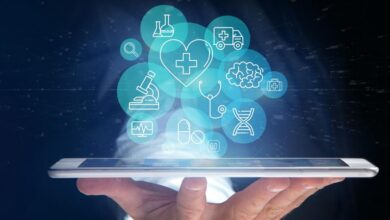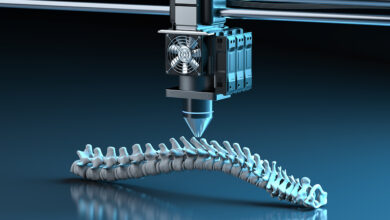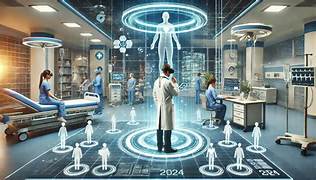Telemedicine 2.0 How Remote Care Is Redefining Global Healthcare Access

Telemedicine 2.0: How Remote Care Is Redefining Global Healthcare Access is revolutionizing the way we perceive and interact with healthcare services. With the rapid advancement of technology, telemedicine has evolved beyond its traditional boundaries, offering innovative solutions that cater to the diverse needs of patients worldwide. This new era not only enhances accessibility but also bridges the gap in healthcare disparities, making it a crucial component of modern medical practices.
The significance of Telemedicine 2.0 lies in its ability to integrate cutting-edge technologies like artificial intelligence and machine learning, leading to more personalized and efficient patient care. As we dive deeper into this topic, we will explore its features, impact on global healthcare access, patient experiences, and the future trends that promise to further transform our healthcare landscape.
Introduction to Telemedicine 2.0
Telemedicine 2.0 represents a pivotal evolution in healthcare delivery, leveraging technology to enhance patient access to medical services. This innovative approach is not just about virtual consultations; it embodies a comprehensive rethinking of how healthcare is delivered, making it more inclusive, efficient, and patient-centered.
The journey of telemedicine has transitioned through various stages, beginning with simple telephone consultations to now encompass advanced virtual care models. The concept of Telemedicine 2.0 builds upon its predecessors by integrating multiple technologies and methodologies that facilitate seamless communication between patients and healthcare providers. This evolution underscores the growing recognition of patient needs and the importance of personalized care, particularly in remote and underserved areas.
Technological Advancements Enabling Telemedicine 2.0
A range of technological innovations has catalyzed the emergence of Telemedicine 2.0, transforming traditional healthcare paradigms. Key advancements include:
- Artificial Intelligence (AI): AI enhances diagnostic accuracy and optimizes patient management systems by analyzing vast datasets and providing personalized treatment recommendations. For instance, AI algorithms can predict patient outcomes based on historical data, leading to more informed decision-making.
- Wearable Devices: Devices such as smartwatches and fitness trackers facilitate continuous health monitoring. These devices collect vital health metrics and transmit data to healthcare providers, enabling real-time intervention when necessary, particularly in chronic disease management.
- Mobile Health Applications: Mobile apps empower patients to access health information, schedule appointments, and communicate with providers directly. These platforms often include reminders for medications and follow-up care, enhancing patient adherence and engagement.
- High-Speed Internet and 5G Technology: Enhanced connectivity allows for high-definition video consultations and faster data transfer, which is crucial for remote diagnostics and treatment. The rollout of 5G networks promises to reduce latency, improving the experience for both patients and providers.
- Blockchain Technology: This technology ensures secure and transparent patient data management. By enabling tamper-proof health records, blockchain builds trust in telemedicine services, addressing concerns over data privacy and integrity.
These advancements collectively contribute to a more holistic healthcare experience that places patients at the forefront, ensuring they have access to timely and effective care regardless of their location. The integration of such technologies exemplifies the transformative potential of Telemedicine 2.0, illustrating its role in shaping the future of healthcare access on a global scale.
Key Features of Telemedicine 2.0
Telemedicine 2.0 signifies a transformative leap from traditional telemedicine, introducing advanced technologies and patient-centered features that enhance healthcare delivery. The evolution aims to bridge gaps in accessibility, efficiency, and user experience, ensuring that individuals receive timely and effective healthcare services regardless of their location.
The core features of Telemedicine 2.0 include improved user interfaces, enhanced data analytics, and integration of cutting-edge technologies. One significant driver of this evolution is the incorporation of artificial intelligence (AI) and machine learning, which play a crucial role in personalizing patient care and streamlining healthcare processes. These technologies enable more accurate diagnostics, predictive analytics, and tailored treatment plans, ultimately leading to better health outcomes.
Role of AI and Machine Learning in Enhancing Remote Care
AI and machine learning are pivotal in the transition to Telemedicine 2.0. They facilitate data-driven decision-making and enhance the overall patient experience. These technologies help identify patterns in patient data, which can lead to early detection of diseases, more accurate diagnoses, and optimized treatment plans. Here are some specific applications:
- Predictive Analytics: AI algorithms analyze historical patient data to predict potential health issues before they arise, allowing for preventative measures.
- Chatbots and Virtual Assistants: These tools provide immediate responses to patient inquiries, assisting with appointment scheduling and basic medical advice, thus enhancing patient engagement.
- Remote Monitoring: Machine learning algorithms assess data from wearable devices, enabling continuous health monitoring and timely interventions when necessary.
- Personalized Treatment Plans: AI analyzes patient responses to various treatments, allowing healthcare providers to create customized care plans that increase the likelihood of positive outcomes.
Comparison of Features: Telemedicine 1.0 vs. Telemedicine 2.0
A clear understanding of the differences between Telemedicine 1.0 and Telemedicine 2.0 can be illustrated through the following comparison table. This highlights the advancements in service delivery, technology, and user experience:
| Feature | Telemedicine 1.0 | Telemedicine 2.0 |
|---|---|---|
| Access to Care | Limited to specific times and locations | On-demand access, 24/7 availability |
| User Interface | Basic and often non-intuitive | Sleek, user-friendly interfaces with seamless navigation |
| Data Utilization | Minimal data collection, manual records | Real-time data analytics, integration with EHR systems |
| Patient Engagement | One-way communication | Interactive platforms with feedback loops |
| Technology Adoption | Limited to video calls and messaging | Incorporates AI, machine learning, and wearable tech |
Through these advancements, Telemedicine 2.0 not only meets the demands of modern healthcare but also proactively addresses the challenges of traditional telemedicine, paving the way for a more inclusive and efficient healthcare landscape.
Impact on Global Healthcare Access
Telemedicine 2.0 is revolutionizing the way healthcare is delivered, particularly for individuals in remote and underserved areas. By leveraging technology, it breaks down geographical barriers and provides essential medical services to those who might otherwise have limited access. This transformation is not only significant for patients but also for healthcare systems aiming to enhance service delivery.
One of the primary advantages of Telemedicine 2.0 is its ability to extend healthcare services into rural and isolated regions. Traditional healthcare models often struggle to provide adequate services in these areas due to the lack of facilities and healthcare professionals. With telemedicine, patients can consult with doctors and specialists through video calls or messaging systems, enabling timely diagnosis and treatment without the need for travel.
Reduction of Healthcare Disparities, Telemedicine 2.0: How Remote Care Is Redefining Global Healthcare Access
Telemedicine 2.0 plays a vital role in addressing healthcare disparities that affect marginalized populations. By offering remote solutions, it helps to mitigate the challenges faced by individuals who encounter barriers related to cost, transportation, and availability of services. The following points illustrate how telemedicine contributes to narrowing these gaps:
- Convenience of Access: Telemedicine allows patients to receive care from the comfort of their homes, reducing the need for lengthy travel to healthcare facilities, which can be burdensome for many.
- Cost-Effectiveness: Virtual consultations often come at a lower cost compared to in-person visits, making healthcare more affordable for low-income families.
- Specialist Availability: Patients in remote areas can access specialists who are typically unavailable locally, ensuring comprehensive care for complex conditions.
- Enhanced Health Monitoring: Remote patient monitoring tools allow continuous health tracking, which is particularly beneficial for those with chronic illnesses, leading to timely interventions.
Successful case studies highlight the effectiveness of Telemedicine 2.0 in enhancing global healthcare access. For instance, in India, the eSanjeevani platform has enabled over 10 million teleconsultations, greatly benefiting rural populations by connecting them with healthcare providers. Another notable example is the use of telemedicine during the COVID-19 pandemic, where countries like Italy implemented remote care solutions to ensure that patients received necessary care while minimizing the risk of virus transmission. These instances demonstrate how telemedicine is not just a temporary fix but a sustainable model for future healthcare delivery, particularly in contexts where access to care has historically been a challenge.
The integration of Telemedicine 2.0 into global healthcare systems is paving the way for a future where healthcare is accessible to everyone, regardless of their location.
Patient Experience in Telemedicine 2.0
Telemedicine 2.0 has significantly transformed the way patients engage with healthcare services, fostering a more interactive, personalized, and satisfying experience. By integrating advanced technology, patients can now access quality care from the comfort of their homes. This shift enhances overall patient engagement, leading to higher levels of satisfaction and improved health outcomes.
Telemedicine 2.0 enhances patient engagement through various innovative features designed to streamline communication and improve accessibility. These tools not only facilitate real-time interaction between patients and healthcare providers but also empower patients by giving them more control over their healthcare journey. The result is a more informed patient population that feels supported and engaged throughout their treatment processes.
Innovative Tools and Platforms in Patient Communication
Telemedicine 2.0 utilizes a range of innovative tools and platforms that enhance patient communication, making healthcare more accessible and personalized. The following tools are central to improving the patient experience:
- Patient Portals: Secure online platforms that allow patients to access their medical records, schedule appointments, and communicate with healthcare teams.
- Mobile Health Apps: Applications that enable patients to monitor their health metrics, receive medication reminders, and connect with healthcare providers through teleconsultations.
- Video Conferencing Tools: Platforms such as Zoom or Doxy.me facilitate face-to-face consultations, helping to maintain the personal touch in remote care.
- Chatbots and Virtual Assistants: AI-driven tools that provide instant responses to patient inquiries, offering information and support outside regular office hours.
- Remote Monitoring Devices: Wearable technology that tracks vital signs and health metrics, allowing for continuous monitoring and timely intervention by healthcare providers.
The importance of these tools lies in their ability to bridge gaps in communication, enabling healthcare providers to engage more effectively with patients and ensuring that patients feel heard and valued.
“Telemedicine has made it easier for me to connect with my doctor without the stress of traveling. I feel more in control of my health.” – A Telemedicine 2.0 User
Patient testimonials illustrate the positive impact of Telemedicine 2.0 on their healthcare experiences. Many users have shared their stories of how remote consultations have saved them time and reduced anxiety associated with traditional in-person visits.
Patients have expressed appreciation for the flexibility of scheduling appointments around their daily lives, as well as the convenience of accessing specialists without the need for extensive travel. Additionally, the ability to communicate through various channels, whether via text, video, or chat, has made patients feel more connected to their care teams.
“The convenience of seeing my doctor from home has been a game-changer for my busy schedule. I never thought I would enjoy a doctor’s visit this much!” – Another satisfied patient
These experiences highlight the shift towards a more patient-centered approach in healthcare, where technology enhances not just the accessibility of care, but also the quality of the patient experience itself.
Regulatory and Ethical Considerations
As Telemedicine 2.0 continues to reshape healthcare delivery, understanding the regulatory and ethical landscape is crucial for ensuring effective and responsible practice. Various regions across the globe have developed unique frameworks to govern telemedicine, reflecting their specific healthcare needs and technological capacities. These regulations are aimed at protecting both healthcare providers and patients while promoting the efficient use of telemedicine services. Furthermore, ethical considerations surrounding patient privacy and data security are paramount as remote care expands.
Regulatory Frameworks of Telemedicine 2.0
Different regions have instituted various regulatory frameworks that dictate how telemedicine can be practiced. These regulations often govern licensure, reimbursement, and the standards of care required in remote healthcare settings. For instance, in the United States, each state has its own licensing requirements. Many states have adopted the Interstate Medical Licensure Compact (IMLC), allowing physicians to practice across state lines more easily. Conversely, in the European Union, the General Data Protection Regulation (GDPR) sets stringent data protection and privacy standards that telemedicine providers must adhere to, ensuring that patient data is handled with the utmost care.
Ethical Concerns Related to Patient Privacy and Data Security
The rapid growth of telemedicine raises significant ethical issues, particularly concerning patient privacy and data security. Patients entrust their sensitive health information to healthcare providers, and any breach of this trust can have serious repercussions. Ensuring that robust measures are in place to protect patient data is not just a legal requirement; it is an ethical obligation. Telemedicine practitioners must be vigilant about employing secure communication channels, encrypting data, and conducting regular security audits to safeguard patient information.
Best Practices for Compliance in Telemedicine 2.0
To ensure adherence to regulatory guidelines and ethical standards, telemedicine providers should follow best practices. Below is a table outlining these practices, which are essential for maintaining compliance and fostering trust with patients:
| Best Practice | Description |
|---|---|
| Data Encryption | Utilizing strong encryption methods for data at rest and in transit to protect sensitive health information. |
| Patient Consent | Obtaining informed consent from patients before initiating telemedicine services, clearly explaining risks and benefits. |
| Secure Platforms | Using secure, HIPAA-compliant telemedicine platforms to conduct virtual consultations. |
| Regular Training | Providing ongoing training for staff on privacy laws and ethical practices in telemedicine. |
| Incident Response Plan | Establishing a clear incident response plan to address potential data breaches effectively. |
Adhering to regulatory frameworks and ethical considerations helps build patient trust and fosters a secure telemedicine environment.
Future Trends in Telemedicine
The landscape of telemedicine is continuously evolving, driven by technological advancements and changing patient needs. As we look to the future, various trends indicate how Telemedicine 2.0 will further redefine healthcare access and delivery across the globe. By integrating newer technologies and improving patient care protocols, we can anticipate a significant transformation in the way healthcare services are provided remotely.
Emerging technologies like Virtual Reality (VR) and Augmented Reality (AR) are poised to have a profound impact on remote care. These tools can enhance the patient experience, making consultations more interactive and engaging. For instance, VR can simulate real-life scenarios for training purposes or provide immersive environments for mental health therapy, while AR can aid healthcare professionals by overlaying digital information onto the physical world during examinations.
Anticipated Changes in Patient Care Protocols
With the progression of Telemedicine 2.0, we can expect several important changes in how patient care is approached. These changes will not only enhance the efficiency of medical services but also improve patient satisfaction and outcomes.
The following points highlight some of the anticipated changes in patient care protocols:
- Integration of AI-driven diagnostics: This will allow for more accurate assessments and personalized treatment plans based on real-time data analysis.
- Increased use of wearable technology: Devices that monitor health metrics will facilitate continuous patient monitoring, providing valuable data for healthcare providers.
- Enhanced data security measures: Strengthened protocols will be essential to protect patient information, fostering trust in telemedicine platforms.
- Real-time health monitoring and alerts: Immediate notifications to both patients and providers will ensure timely interventions when necessary.
- Expanded tele-rehabilitation services: This will support patients recovering from injuries or surgeries through remote physical therapy sessions.
“Telemedicine 2.0 is set to revolutionize the healthcare experience, making it more engaging and accessible for patients.”
The impact of these anticipated changes will be significant, paving the way for a healthcare system that is not only more efficient but also much more responsive to the individual needs of patients worldwide.
Challenges and Solutions
The implementation of Telemedicine 2.0 presents exciting opportunities for healthcare providers, but it also brings a unique set of challenges. These challenges must be carefully navigated to ensure the effective delivery of remote care and to maintain high standards of patient care. Understanding these hurdles is essential for building a robust telemedicine framework that can positively impact global healthcare access.
Healthcare providers face several common challenges in adopting Telemedicine 2.0. These include infrastructural limitations, technology adoption resistance, regulatory complexities, and ensuring patient privacy and data security. Each of these factors can impede the smooth integration of telemedicine into existing healthcare systems. Addressing these challenges requires strategic solutions and frameworks that can enhance operational efficiency and patient satisfaction.
Common Challenges in Implementing Telemedicine 2.0
The road to effective telemedicine practices is often laden with various challenges that affect providers and patients alike. Key challenges include:
– Technological Barriers: Limited access to reliable internet and technological devices can hinder telemedicine’s reach, particularly in rural or underserved areas.
– Provider Resistance: Some healthcare providers may be hesitant to embrace telemedicine due to unfamiliarity with technology or concerns about the quality of care.
– Regulatory Compliance: Navigating complex and varying regulations regarding telehealth practices can pose significant challenges for providers.
– Data Security Concerns: Protecting patient data during virtual consultations is crucial, yet many providers struggle to implement adequate cybersecurity measures.
To overcome these challenges, healthcare organizations can adopt strategic solutions tailored to their specific needs.
Strategic Solutions to Overcome Challenges
Implementing effective strategies is essential for overcoming barriers in telemedicine. Recommended solutions include:
– Investing in Infrastructure: Enhance technological infrastructure to ensure reliable internet connectivity and access to necessary devices. This may involve partnerships with tech companies or local governments to improve broadband access in underserved areas.
– Training and Support: Providing comprehensive training programs for healthcare providers can help ease resistance to telemedicine. Ongoing technical support also encourages providers to utilize telehealth solutions confidently.
– Simplifying Regulations: Engaging with policymakers to streamline telemedicine regulations can alleviate compliance burdens. Advocacy efforts can help establish consistent guidelines that facilitate telehealth practices across regions.
– Enhancing Cybersecurity Measures: Implementing robust cybersecurity protocols is vital to protect patient data. Regular audits and updates in security software, along with staff education on privacy practices, can effectively mitigate risks.
To support seamless telemedicine operations, several technological solutions can be leveraged. These tools not only facilitate service delivery but also enhance patient experience and provider efficiency.
Technological Solutions for Telemedicine
The following technological solutions contribute to smoother telemedicine practices and address the challenges faced by healthcare providers:
– Telehealth Platforms: Integrated platforms that facilitate video consultations, appointment scheduling, and patient management streamline the delivery of care.
– Remote Monitoring Tools: Devices that allow healthcare providers to monitor patients’ health metrics remotely can improve outcomes and reduce the need for in-person visits.
– Mobile Health Applications: User-friendly apps enable patients to access healthcare services, receive reminders, and communicate with their providers seamlessly.
– Cloud-Based Systems: Utilizing cloud technology for storing patient data enhances accessibility, collaboration, and security, allowing providers to share information effectively.
– AI and Chatbots: These tools can assist in triaging patients, providing preliminary assessments, and answering common inquiries, reducing the burden on healthcare staff.
By addressing these challenges and implementing strategic solutions, healthcare providers can successfully navigate the transition to Telemedicine 2.0, ultimately enhancing global healthcare access.
Last Recap: Telemedicine 2.0: How Remote Care Is Redefining Global Healthcare Access
In conclusion, Telemedicine 2.0 is shaping the future of healthcare access by leveraging technology to offer solutions that are not only innovative but also essential for overcoming geographical and socio-economic barriers. As we continue to embrace these advancements, it is vital to remain aware of the regulatory and ethical considerations that accompany them. The journey of Telemedicine 2.0 is just beginning, and it holds the potential to provide healthcare access for all, ensuring that no one is left behind.
Common Queries
What is Telemedicine 2.0?
Telemedicine 2.0 refers to the next generation of telemedicine that incorporates advanced technologies like AI to improve remote healthcare delivery.
How does Telemedicine 2.0 enhance patient experience?
It enhances patient experience by providing more engaging tools for communication, personalized care options, and increased accessibility to healthcare services.
What are the main challenges in implementing Telemedicine 2.0?
The main challenges include regulatory compliance, data security concerns, and ensuring equal access for patients in underserved areas.
How can healthcare providers overcome these challenges?
Providers can overcome challenges by adopting best practices for compliance, investing in secure technologies, and developing strategic partnerships to enhance access.
What role does AI play in Telemedicine 2.0?
AI plays a crucial role by analyzing patient data to provide personalized treatment recommendations and improve the overall efficiency of remote care.






